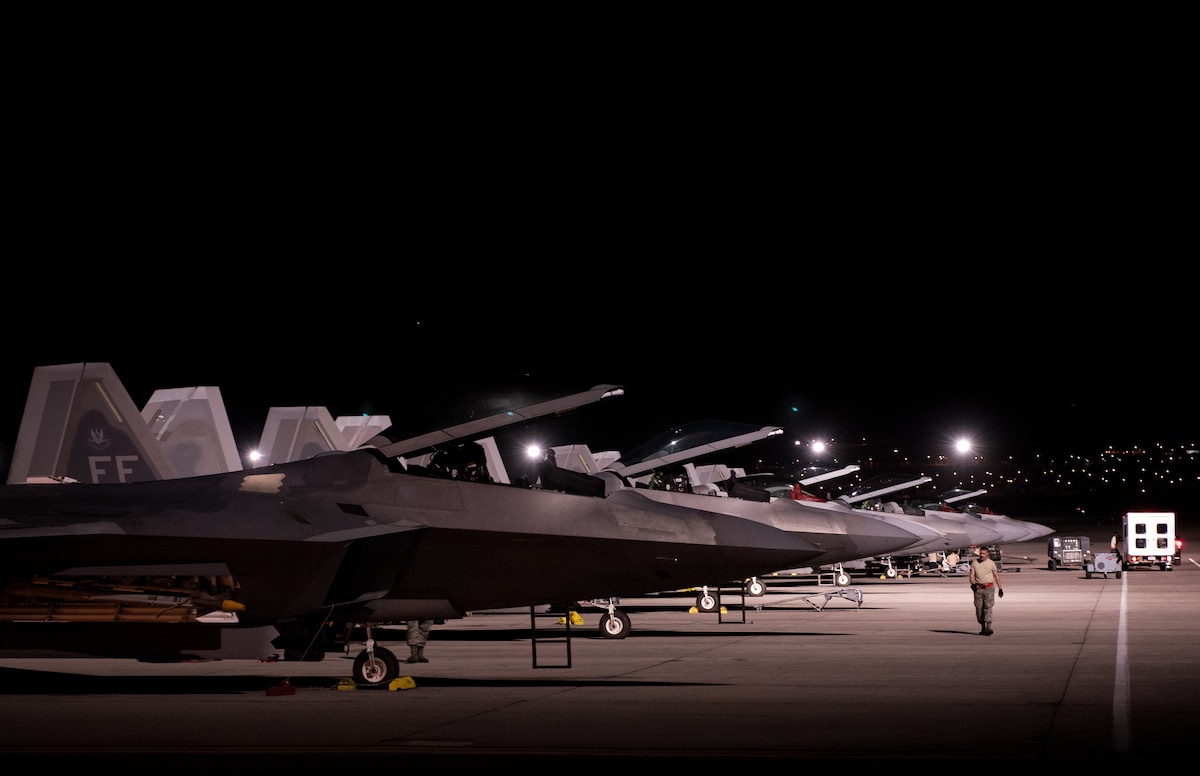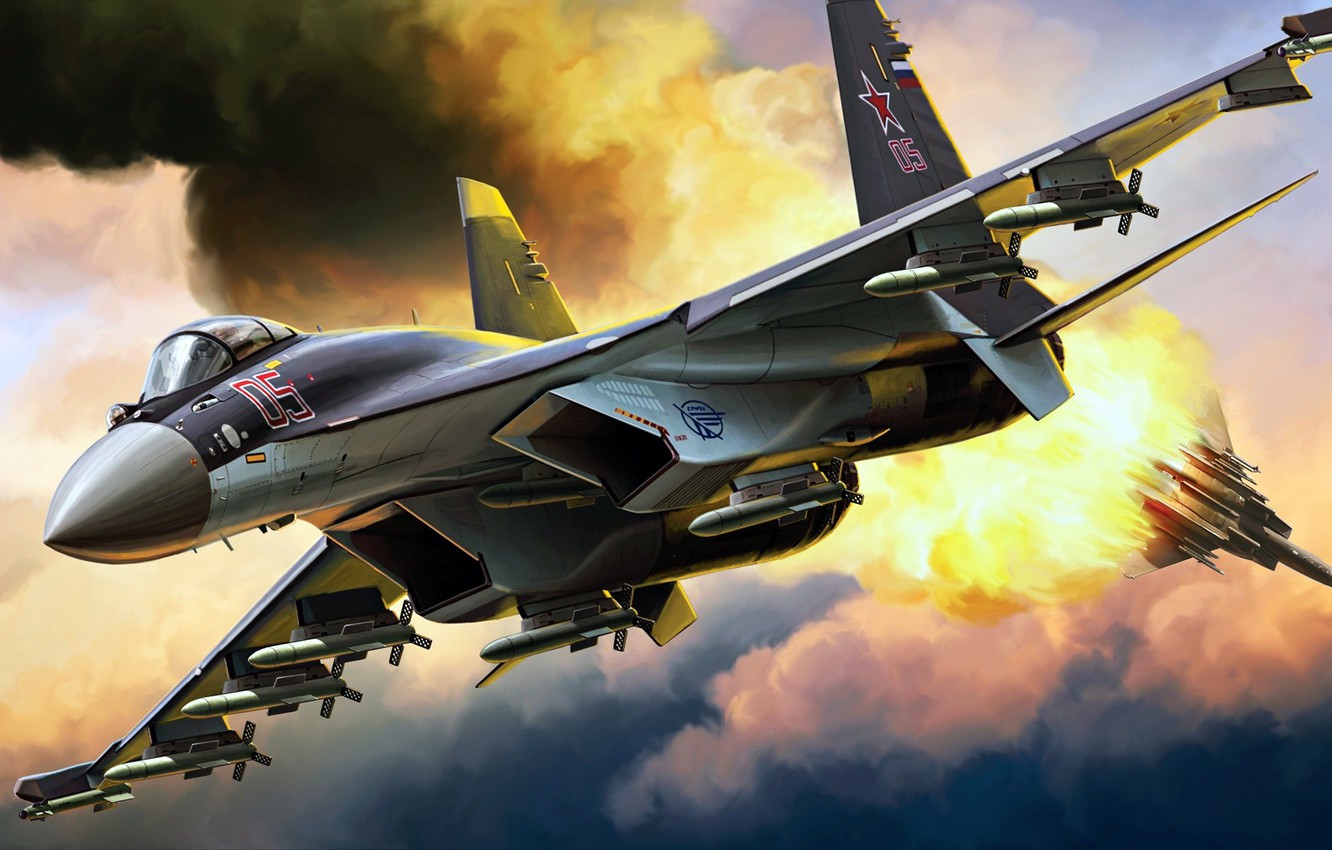After multiple dangerous encounters between the Russian Su-35 Flanker-E and US Air Force (USAF) fighter jets in Syria, Washington has dispatched its most vaunted F-22 Raptor stealth fighter jet to the Middle East.
Backstabbed During Pakistan War, India ‘Ditches’ US GPS For ‘Much More Accurate’ NavIC Navigation System
The F-22 Raptors recently touched down in the Middle East as part of an overt display of force in reaction to recent activities by Russian military forces in the region, especially in Syria. The announcement about the arrival of the aircraft was made by the US Central Command (CENTCOM).
Images and video made public showed at least two F-22s landing and flying alongside two F-16C Viper fighters equipped with live AIM-120 Advanced Medium Range Air-to-Air Missiles (AMRAAM), AIM-9X Sidewinders, GBU-39/B Small Diameter Bombs, and Joint Direct Attack Munition (JDAM) precision-guided bombs.
Further, the CENTCOM press release noted, “The F-22’s combination of stealth, aerodynamic performance, and mission systems make it the best fifth-generation fighter in the world. While in the CENTCOM area, the 94th Fighter Squadron will integrate with coalition forces on the ground and in the air.”
The deployment is significant as it comes after multiple warnings issued by the CENTCOM over several months this year, asserting that Russian warplanes often engage in dangerous engagements with US jets, besides flying sorties over strategic US bases like the Al Tanf and collecting vital intelligence.
The US ?? military has deployed F-22 Raptor fighter jets to the Middle East, following months of complaints that Russian ?? aircraft have been buzzing US bases in Syria ??, violating protocols developed to prevent fighting between American & Russian forceshttps://t.co/LtkFEqaHwH pic.twitter.com/Bs4Vs9hI74
— Saad Abedine (@SaadAbedine) June 15, 2023
The CENTCOM release also highlighted this: “Russian Forces’ unsafe and unprofessional behavior is not what we expect from a professional air force. Their regular violation of agreed-upon airspace deconfliction measures increases the risk of escalation or miscalculation. Alongside our partners and allies, we are committed to improving the security and stability in the region.”
In April this year, the US Air Force declassified two videos that showed dangerous interceptions by Russian Su-35 on two different occasions.
Awaiting 4.5-Gen Rafale Fighters, Indonesia Buys Second-Hand Mirage 2000 Jets From Qatar; Here Is Why
In one of the two instances, the video was shot by an unknown US fighter, while an F-16 Viper hit the other. In one video allegedly captured on April 18, a Russian Su-35 aircraft was performing an intercept mission when it came within 2,000 feet of an unidentified US aircraft.
CENTCOM head, Lt. Gen. Alexus Grynkewich, responsible for directing American military activities over Syria and 20 other countries in the Middle East and Southeast Asia, said, “It’s a ripe situation for us to see some sort of miscalculation. It signals a breakdown in professionalism that I have never seen out of the Russian Air Force.”
Previously, the General had also noted that the Russian soldiers had broken the agreement more than 60 times since March 1. He emphasized that at least twice, Russian pilots were within 500 feet of Russian aircraft, which were supposed to fly at least three nautical miles away from American aircraft.
However, this may not be the first time the US dispatched its F-22 Raptors as a show of force after Russia conducted intimidating maneuvers.

The US has already deployed its F-22 Raptors along NATO’s eastern flanks to counter the aggressive maneuvers conducted by Russian fighters. In April, the US deployed 12 F-22 Raptors to Poland’s Powidz air base to safeguard NATO’s eastern flank.
Later, in May, a contingent of US Air Force F-22 fighters was deployed to Estonia on May 8 to support NATO’s ongoing air policing operations in the region.
This is likely why the US has dispatched the best stealth dogfighter in its inventory to the Middle East with an eye on Russia. However, more than just the Russian factor has come into play here, with Iran also emerging as a potent adversary steadily.
Iran Emerging A Potential Threat
In a recent Tech Summit, the CENTCOM head, Lt. Gen. Alexus Grynkewich, said, “I’ll tell you, I… think this is driven by a confluence of our adversaries now. So, with Russia being beholden to Iran, with the mighty Russian Air Force having to buy UAVs [uncrewed aerial vehicles] from Iran, the Russians owe the Iranians something.”
After supplementing Russian attacks against Ukraine by providing its cheap and expendable Shahed-class drones at the cost of further alienation from the West and additional sanctions, Iran is set to receive a set of arms from Russia as a returning favor.
The most lethal and alarming of these could be the Russian Su-35 Flanker-Es that have already become a headache for the US.
Media reports last month indicated that the first batch of Russian fighter jets will be sent to Iran soon. The 24 Su-35 attack aircraft, undoubtedly Russia’s most technologically advanced fighters, will significantly boost the Iranian air force, which has not added a new fighter in the twenty-first century.
The two nations are moving quickly to conclude the deal since it was first mentioned in March 2023. Iranian pilots have been preparing for the new jets since at least September 2022, as per claims made by the media earlier. If anything, this would usher a proliferation of Su-35s in the Middle East, alarming the US.
Grynkewich said in his interaction, “So that dynamic, I think, has resulted in collusion, if you will, between the Russians and the Iranians, both of whom want to see us out of Syria. They’re [also] colluding with the Syrian regime and trying to push us out of Syria as quickly as possible.”

It may not be the first time that the USAF has resorted to deploying F-22 Raptors to the region. However, traditionally, it has been in response to geopolitical conflict with regional actors, particularly Iran, and has typically not been presented as specifically directed against any particular nation.
As The Drive notes, it’s particularly noteworthy in the current context that Raptors were employed in the early 2010s to escort American drones over the Persian Gulf in response to a wave of Iranian combat aircraft harassment.
However, with Russian Su-35 allegedly engaging in dangerous interceptions with US fighters and now Iran slated to receive its batch of Su-35s, the threat faced by the United States CENTCOM could be discernable.
- Contact the author at sakshi.tiwari9555(at)gmail.com
- Follow EurAsian Times on Google News




